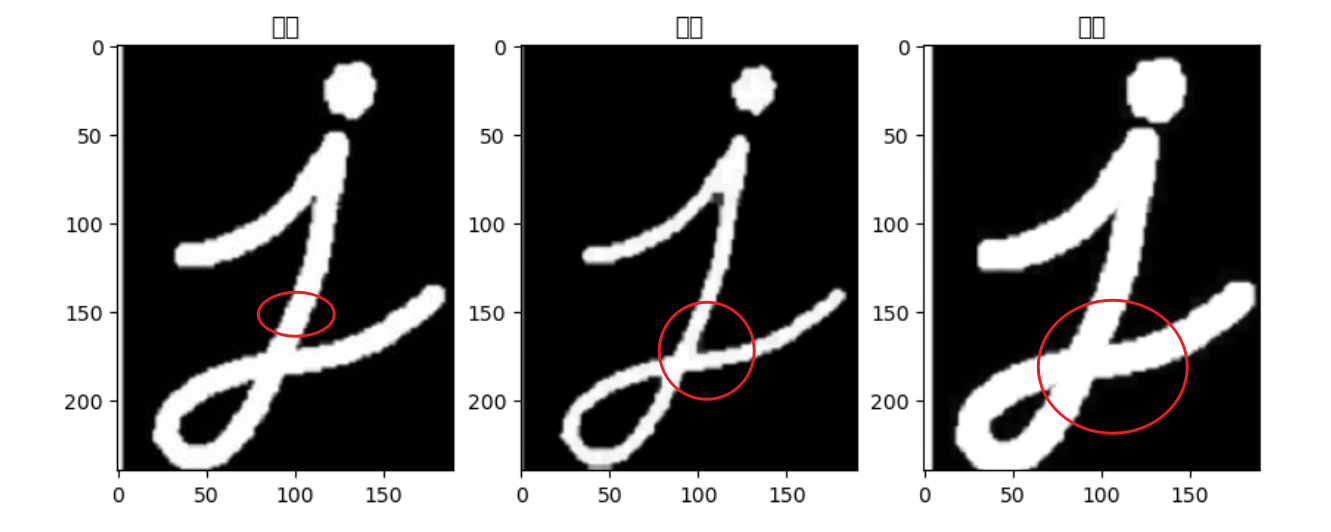OpenCV轮廓识别轮廓分析与理解:图像语义理解
发布时间: 2024-08-10 12:21:35 阅读量: 34 订阅数: 43 


# 1. OpenCV轮廓识别简介
**1.1 轮廓识别的概念**
轮廓识别是一种计算机视觉技术,用于从图像中提取对象的边界。轮廓是一组相邻像素的集合,它们与背景像素不同。轮廓识别对于许多计算机视觉任务至关重要,例如目标检测、图像分割和对象识别。
**1.2 轮廓识别的应用**
轮廓识别在各种应用中都有广泛的应用,包括:
* **目标检测:**识别图像中的对象,例如行人、车辆和动物。
* **图像分割:**将图像分割成不同的区域,例如前景和背景。
* **对象识别:**识别图像中的特定对象,例如人脸、手势和文本。
# 2. OpenCV轮廓识别基础理论
### 2.1 轮廓的概念和提取方法
#### 2.1.1 轮廓的定义和特征
轮廓是图像中目标边界上的连续点集合,它描述了目标的形状和结构。轮廓具有以下特征:
- **闭合性:** 轮廓是一个闭合的曲线,起点和终点相连。
- **连通性:** 轮廓中的所有点都是连通的,即可以从任何一点通过连续的路径到达其他任何一点。
- **方向性:** 轮廓具有方向性,可以顺时针或逆时针追踪。
#### 2.1.2 轮廓提取算法
轮廓提取算法从图像中提取轮廓。常用的算法包括:
- **Canny边缘检测:** 检测图像中的边缘,然后连接边缘点形成轮廓。
- **Sobel算子:** 计算图像中每个像素的梯度,然后阈值化梯度图像以提取轮廓。
- **形态学操作:** 使用形态学运算(如膨胀和腐蚀)来增强轮廓并消除噪声。
### 2.2 轮廓的分析与理解
#### 2.2.1 轮廓的形状描述
轮廓的形状可以用各种度量来描述,包括:
- **面积:** 轮廓内包含的像素数。
- **周长:** 轮廓上所有点的长度之和。
- **凸包:** 轮廓的最小凸多边形。
- **圆度:** 轮廓与面积相等的圆的周长之比。
#### 2.2.2 轮廓的拓扑关系
轮廓的拓扑关系描述了轮廓之间的相互关系,包括:
- **层次结构:** 轮廓可以嵌套在其他轮廓内,形成层次结构。
- **相邻关系:** 轮廓可以相邻或相交。
- **包含关系:** 一个轮廓可以包含另一个轮廓。
### 代码示例:使用Canny边缘检测提取轮廓
```python
import cv2
import numpy as np
# 读取图像
image = cv2.imread('image.jpg')
# 灰度转换
gray = cv2.cvtColor(image, cv2.COLOR_BGR2GRAY)
# Canny边缘检测
edges = cv2.Canny(gray, 100, 200)
# 查找轮廓
contours, hierarchy = cv2.findContours(edges, cv2.RETR_EXTERNAL, cv2.CHAIN_APPROX_SIMPLE)
# 绘制轮廓
cv2.drawContours(image, contours, -1, (0, 255, 0), 2)
# 显示结果
cv2.imshow('Contours', image)
cv2.waitKey(0)
cv2.destroyAllWindows()
```
**代码逻辑分析:**
1. 使用`cv2.imread()`读取图像。
2. 使用`cv2.cvtColor()`将图像转换为灰度图像。
3. 使用`cv2.Canny()`进行边缘检测。
4. 使用`cv2.findContours()`查找轮廓。
5. 使用`cv2.drawContours()`绘制轮廓。
6. 使用`cv2.imshow()`显示结果。
**参数说明:**
- `cv2.Canny(gray, 100, 200)`:Canny边缘检测函数,其中100和200是两个阈值。
- `cv2.findContours(edges, cv2.RETR_EXTERNAL, cv2.CHAIN_APPROX_SIMPLE)`:查找轮廓函数,其中`cv2.RETR_EXTERNAL`表示只查找外部轮廓,`cv2.CHAIN_APPROX_SIMPLE`表示使用简单近似方法。
- `cv2.drawContours(image, contours, -1, (0, 255, 0), 2)`:绘制轮廓函数,其中`-1`表示绘制所有轮廓,`(0, 255, 0)`表示绿色,2表示线宽。
# 3. OpenCV轮廓识别实战应用
### 3.1 目标检测与跟踪
#### 3.1.1 目标检测算法
**滑动窗口法:**
```python
def sliding_window(image, window_size, stride):
"""
滑动窗口法目标检测算法
Args:
image: 输入图像
window_size: 窗口大小
stride: 步长
Returns:
窗口列表
"""
windows = []
for y in range(0, image.shape[0] - window_size[0] + 1, stride):
for x in range(0, image.shape[1] - window_size[1] + 1, stride):
window = image[y:y + window_size[0], x:x + window_size[1]]
windows.append(window)
return windows
```
**逻辑分析:**
* 遍历图像,步长为`stride`。
* 对于每个位置,提取`window_size`大小的窗口。
* 将窗口添加到窗口列表中。
**参数说明:**
* `image`: 输入图像,形状为`(H, W, C)`。
* `window_size`: 窗口大小,形状为`(h, w)`。
* `stride`: 步长。
**集成通道法:**
```python
def integral_channel(image):
"""
计算图像的积分通道
Args:
image: 输入图像
Returns:
积分通道
"""
integral = np.cumsum(image, axis=0)
integral = np.cumsum(integral, axis=1)
return integral
```
**逻辑分析:**
* 沿行方向累加图像,得到行积分。
* 沿列方向累加行积分,得到积分通道。
**参数说明:**
* `image`: 输入图像,形状为`(H, W, C)`。
**3.1.2 目标跟踪算法
**卡尔曼滤波:**
```python
def kalman_filter(x, P, A, B, u, Q, R, H):
"""
卡尔曼滤波算法
Args:
x: 状态向量
P: 协方差矩阵
A: 状态转移矩阵
B: 控制矩阵
u: 控制输入
Q: 过程噪声协方差矩阵
R: 测量噪声协方差矩阵
H: 观测矩阵
Returns:
更新后的状态向量和协方差矩阵
"""
# 预测
```
0
0





